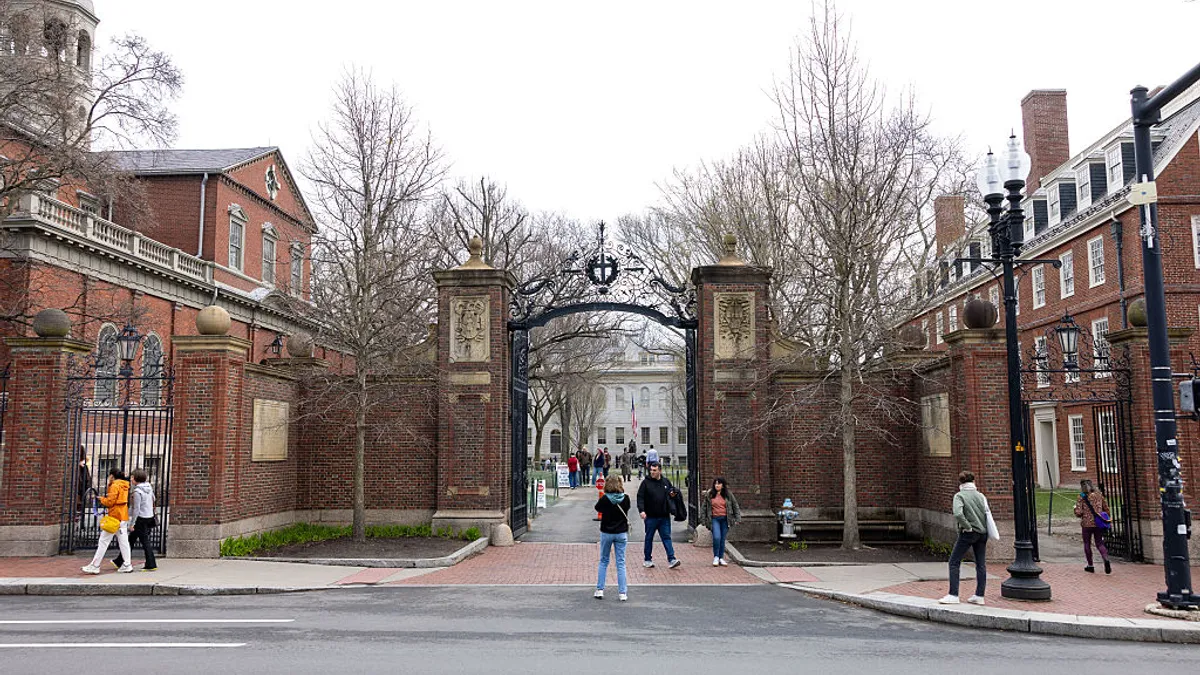For many students, federal financial aid enables their pursuit of higher education. But the FAFSA — the Free Application for Federal Student Aid — often stands between students and that assistance.
For years, advocates have proposed making completion of the FAFSA a high school graduation requirement, in the hopes of making college more affordable and encouraging students to think of it as an option. That policy is now beginning to catch on.
Louisiana was the first to implement the idea in the 2017-18 academic year, and a handful of states quickly followed suit.
Even more states are considering or have recently passed laws mandating the form for students. The governors of Indiana and Oklahoma signed FAFSA mandates into law this spring. Kansas has one that will take effect beginning with the class of 2028. And lawmakers in Massachusetts and Nebraska are now considering legislation to require high school students to fill out the application.
Research shows the policies can help states increase FAFSA completion, but advocates say policy design still matters.
In Louisiana, Alabama and Texas, the number of FAFSA completions increased by about 25% after new looks took effect, said Bill DeBaun, senior director of data and strategic initiatives at the National College Attainment Network, a nonprofit organization that has advocated for the policy. For Louisiana, that meant the state became a leader in FAFSA completions when the law went into effect in 2018, with about 70% of seniors completing the form by June 30th of that year, according to a recent NCAN analysis.
In Illinois, completions only went up by 3% when the mandate took effect in the 2020-21 academic year, with 65.7% of that year’s senior class finishing the form. DeBaun said those figures were likely influenced by the pandemic.
“We have pretty good evidence that universal FAFSA policies do bump up the number of FAFSAs completed,” he said.
The evidence about whether these policies increase college-going among high school students is more sparse. The studies that do exist typically show only small effects.
“The policy is outpacing the empirical evidence at this point,” DeBaun said.
Not every student who fills out the FAFSA will receive financial aid. State laws typically require students to submit their portions of the form but don’t mandate parents and families to complete their parts. Students only qualify for financial aid if the whole form is complete, Peter Granville, a fellow at The Century Foundation, said via email.
But Chris Lowery, Indiana’s higher education commissioner, said he still hopes the state’s new law can increase the number of students attending college and their persistence once they are enrolled, especially for students of color and rural students.
Indiana students already in college left more than $65 million in Pell Grant dollars on the table by not completing the FAFSA in the 2020-21 academic year, according to an NCAN analysis.
“We’re confident the college-going rate is going to increase for youth and hopefully for adults too,” said Lowery. “We want to continue to build that robust talent pipeline here in Indiana.
Crafting a strategy
Indiana’s law, like others, includes an opt-out provision for students who know that they don’t plan to attend college. That allows students to still graduate high school if completing the FAFSA is not part of their plan.
However, other policy elements can make FAFSA requirements more effective and help alleviate any new burdens on students and schools, DeBaun said.
One of those is timing. NCAN recommends that states wait one academic year between passing and implementing a mandatory FAFSA policy. That’s so schools and agencies have the time to make changes and gear up to help students complete their forms.
“We’ve seen a couple of cases where it’s been passed and then by the next FAFSA cycle it’s implemented,” said Raymond AlQaisi, NCAN’s senior manager of policy and advocacy. “It’s just not enough time to provide the training and supports that we think are necessary for this policy to be effective. Students need to be supported if they are experiencing a new requirement.”
That’s not the only important element. The FAFSA can be confusing, and experts say that states should make counselors available to advise students and families and help them complete the form.
Usually that means money.
“Any state enacting this policy needs to make sure schools have the resources to support families with the form, which will likely require new spending,” Granville said. “The graduation requirement appeals to lawmakers as a low-cost intervention, but it’s not without any cost.”
If counselors are overwhelmed, students who can’t find help may be pushed to opt-out of FAFSA completion. Low-income students are more likely to be at high schools with fewer resources.
“Although there are a lot of school counselors around the country who are assisting students with FAFSA completion, a shift from, ‘Some students should complete the FAFSA,’ to ‘Ideally all students should complete the FAFSA,’ is undoubtedly a change in the amount of time and energy that needs to be invested to achieve that goal,” DeBaun said.
In Indiana, the new law doesn’t include additional funding to high schools. But Lowery said Indiana’s higher education commission plans on transitioning staff from just selling the idea of the FAFSA to students toward helping them fill out the form.
“We have always had a cadre of outreach coordinators around the state,” Lowery said. “We’re going to be able to pivot and reallocate our resources.”
The requirement is only one aspect of Indiana’s push for greater postsecondary attainment, he said.
Granville said a comprehensive plan, beyond one policy, should be the norm.
“The FAFSA graduation requirement can be a valuable component of a state’s plan to improve college access,” he said. “It just can’t be the only component.”






















